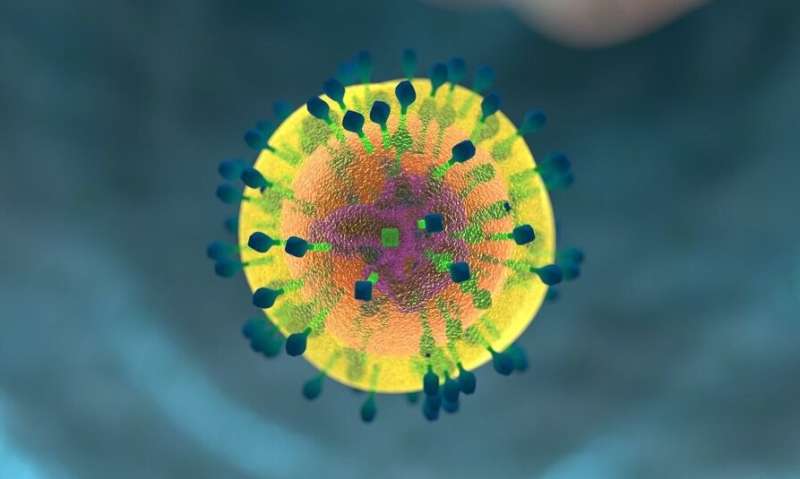
Researchers at the Francis Crick Institute, working with Imperial College London, King’s College London and University of Cambridge, have shown that an influx of water and ions into immune cells allows them to migrate to where they’re needed in the body.
Our bodies respond to illness by sending out chemical signals called chemokines, which tell immune cells called T cells where to go to fight the infection. This process had already been associated with a protein called WNK1, which activates channels on the cell surface, allowing ions (salts like sodium or potassium) to move into cells. Until now, it was not clear why ion influx was needed for T cells to move.
Through a study published in Nature Communications, the researchers imaged mouse T cells and observed that, following a chemokine signal, WNK1 is activated at the front of the cells, called the “leading edge.”
The team showed that the activation of WNK1 opens channels on the leading edge, resulting in an influx of water and ions. They propose that this flow of water causes the cells to swell on the front side, creating space for the ‘actin cytoskeleton’—the scaffolding inside the cell that holds its structure—to grow into. This propels the whole cell forward and the process repeats again.
The researchers used gene editing to stop mice producing WNK1, or an inhibitor to prevent WNK1’s activity, observing that the T cells in these mice slowed down or stopped moving completely.
Importantly, they found that they could make up for the loss of WNK1 and make the cells speed up by dropping them into a watery solution, which causes the cells to take up water and swell. This shows that the uptake of water, controlled by the WNK1 protein is key for the cells to migrate.
The researchers believe that the mechanism they’ve discovered could be involved in lots of different cell types beyond immune cells.
Victor Tybulewicz, Group Leader of the Immune Cell Biology Laboratory & Down Syndrome Laboratory at the Crick, said, “Through this research, we’ve unraveled one of the mysteries of T cell movement, showing that WKN1 causes water and ions to flow into T cells, giving them the space to grow their scaffolding and move forward. Although we looked at T cells, it’s likely that this process is happening in many of our cells and even in diseases like cancer, which is important as when cancer cells spread, it is harder to treat.”
Leon de Boer, former postdoctoral researcher at the Crick and now at the Karolinska Institute in Sweden, said, “This process has been speculated about for decades, but advances in technology have finally allowed us to show how WNK1 helps T cells migrate around the body—water comes in almost like a jet engine moving the cell forward.”
“I am excited that researchers are starting to investigate WNK1 inhibitors to treat diseases like cancer. In my new project, I’m looking at how properties of membranes help cancer cells to move around the body.”
More information:
Leonard L. de Boer et al, T cell migration requires ion and water influx to regulate actin polymerization, Nature Communications (2023). DOI: 10.1038/s41467-023-43423-8
Journal information:
Nature Communications
Source: Read Full Article
